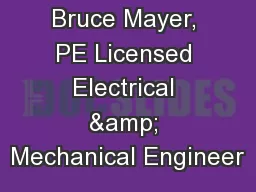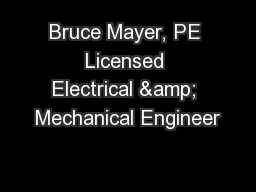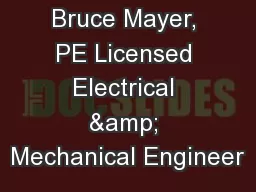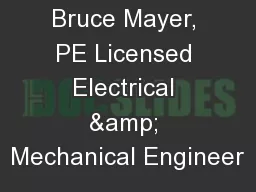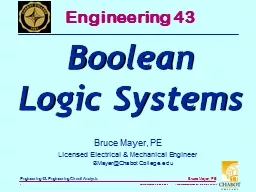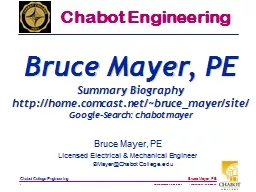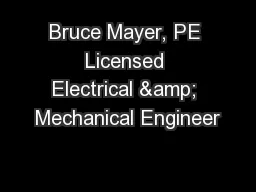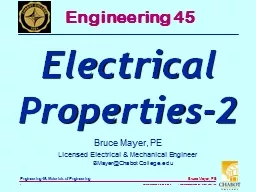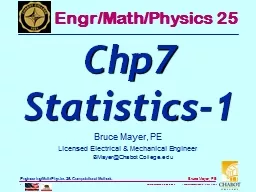PPT-Bruce Mayer, PE Licensed Electrical & Mechanical Engineer
Author : trish-goza | Published Date : 2019-06-21
BMayerChabotCollegeedu Chabot Engineering Degrees PEs and System Engineering Outline Speaker Bio Which Degree BS MS PhD PE Systems Engineering What is it The Defining
Presentation Embed Code
Download Presentation
Download Presentation The PPT/PDF document "Bruce Mayer, PE Licensed Electrical &..." is the property of its rightful owner. Permission is granted to download and print the materials on this website for personal, non-commercial use only, and to display it on your personal computer provided you do not modify the materials and that you retain all copyright notices contained in the materials. By downloading content from our website, you accept the terms of this agreement.
Bruce Mayer, PE Licensed Electrical & Mechanical Engineer: Transcript
Download Rules Of Document
"Bruce Mayer, PE Licensed Electrical & Mechanical Engineer"The content belongs to its owner. You may download and print it for personal use, without modification, and keep all copyright notices. By downloading, you agree to these terms.
Related Documents


